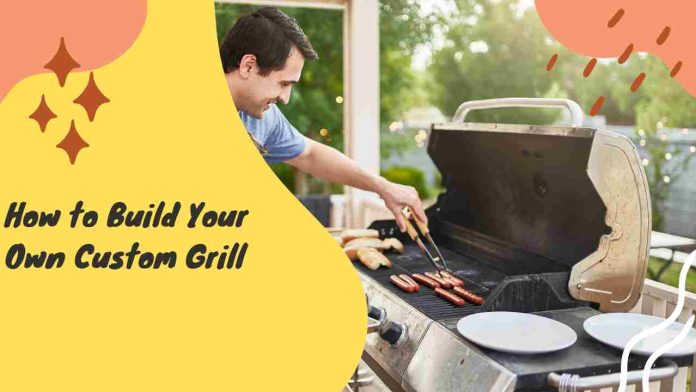Grilling has always been a well-liked cooking technique that brings people together over delectable meals and fosters lifelong memories. Even though there are many alternatives to buying a barbecue, creating your unique grill can be a fun and fulfilling job. It enables you to modify the layout and features to suit your particular requirements and provides you the joy of making something original. This post will walk you through the steps of creating your own custom grill.
Steps To Build Your Own Custom Grill
1. Research and Planning
Conducting an exhaustive study and formulating a comprehensive plan before beginning any endeavor is critical. Invest the time to investigate several options for the designs, materials, and components that will best serve your purposes. Look for ideas and inspiration online, read articles, and talk to people who have built grills. Whether you’re customizing a normal grill or a custom Santa Maria grill make sure to pay close attention to the dimensions, features, and capabilities of already existing grills in order to have a solid comprehension of the goals you hope to accomplish.
2. Gathering Materials
The moment to gather the required resources comes when you have a clear idea in mind. Generally, a firebox, a cooking grate, a height-adjustment mechanism, and a frame make up a personalized grill. Select a durable material for the firebox, like cast iron or stainless steel, that can resist high temperatures. When choosing the grilling grate, consider the size of your grill and how much cooking space you need. Sturdy materials like steel or aluminum are frequently employed for the frame. To endure the demands of grilling, ensure all the materials are sturdy and of excellent quality.
3. Building the Firebox
The heat is contained and dispersed throughout the grill via the firebox, which serves as the device’s beating heart. To get started, use the selected material to assemble the firebox. Weld or otherwise firmly attach the components to one another so that they form a snug fit. The firebox should have adequate ventilation and an adjustable air intake system for temperature management. During the cooking process, you will have the ability to precisely adjust the temperature. To prevent the heat from escaping and keep the temperatures stable for cooking, check that the firebox is robust and adequately insulated.
4. Constructing the Cooking Grate
The cooking grate, which provides the surface on which you’ll set your food for grilling, is where the magic happens. To fit your preferred cooking area, measure and cut the grate. Consider using stainless steel rods or grates because they are strong and resistant to high temperatures. In order to prevent smaller items from dropping through the gaps between the rods and to allow heat and smoke to reach the food, make sure that they are sufficiently large. The rods should be tightly fastened to a frame with welding or strong screws or bolts.
5. Implementing a Height Adjustment Mechanism
A grill’s height adjustment system, which enables you to regulate the distance between the cooking grate and the fire, is one of its defining characteristics. due to this feature, you can sear or slow-cook your food as you choose, which allows you precise control over the cooking temperature. Create and put in place a height adjustment system that matches your needs. A crank system, a pulley system, or a lever mechanism are popular alternatives. Ensure the machine is reliable, simple, and offers precise height adjustments.
6. Building the Frame
The frame’s support and stability to the rest of the grill structure are essential. Create a strong framework to support the weight of the firebox, the cooking grate, and any additional components. Think about constructing the frame out of thick tubes made of steel or aluminum. Weld or screw the components securely together, taking care to ensure that they are aligned correctly. If you want to improve the utility, you might include elements like side tables or storage sections in the design. Especially if you intend to use the grill in various settings, you should ensure that the frame is well-balanced and allows easy movement of the grill.
7. Finishing Touches
Take the time to add any finishing touches that will enhance the grill’s usefulness and looks once you have constructed the primary components of your grill. Think about installing wheels for simple transportation and hooks for convenient storage of utensils. Protect the metal from rust and corrosion by painting or powder coating it with a paint that can withstand high temperatures. Make your grill one-of-a-kind by decorating it with one-of-a-kind motifs or patterns that express your sense of style and who you are.
Conclusion
A satisfying experience that lets you design a grill specific to your preferences is building your own personalized grill. You can create a one-of-a-kind and useful grill that will serve as the focal point of your outdoor cooking experiences by doing in-depth research, obtaining premium materials, and following a step-by-step procedure. Whether you’re a grilling pro or a novice, the thrill of building your unique barbecue grill will surely improve your grilling abilities. Take on the difficulty, let your imagination run wild, and savor the benefits of creating your unique grill.








